The SA Agulhas II 2025 voyage visitors' second week on Tristan
Reports from Kelly Green and Philip Kendall
Each year, the SA Agulhas II makes a scheduled stop at Tristan as part of her supply and research voyage to the South African base on Gough Island. For Tristan, the ship's arrival brings much-needed cargo, visitors, and opportunities for exchange, making it one of the most anticipated events in the island's calendar.
On 21st September, Tristan warmly welcomed the SA Agulhas II. After her arrival, the island was buzzing with activity as visitors enjoyed a wide range of experiences both in the settlement and further afield. We reported the first week of the visit earlier. Here's what else has happened since...
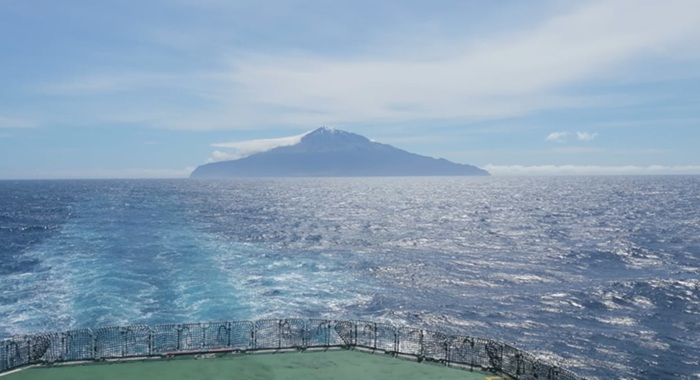
Classic silhouette of Tristan island as the Agulhas II heads off on the Gough Island leg of her voyage.
Photo: Antarctic Legacy of South Africa
Work at Gough Island
Once passengers had been landed, a team of Tristan men travelled with the ship to Gough Island to help ensure strict biosecurity measures were in place for protecting the island's fragile ecosystem from invasive species. They also installed a new AIS (Automatic Identification System) beacon, which acts like a digital lighthouse, helping track ships in the South Atlantic and improving maritime safety for Tristan and passing vessels.
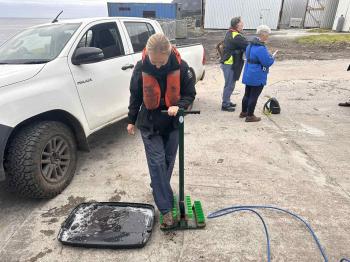 |
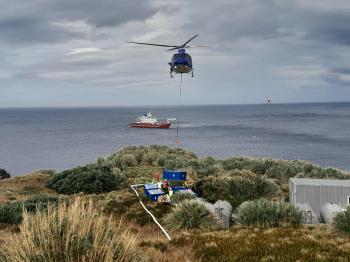 |
| Biosecurity measures: boot washing at Calshot Harbour. Photo: Shannon Swain | Helicopter lowering a container at the Gough Island base. Photo: Nathan Swain |
Activities at the Post Office & Tourism Centre
The Post Office & Tourism Centre has been at the heart of the action, with the coffee machine running full-time and a steady flow of both new and familiar faces coming through the doors. Our first Wednesday lunch was a full house, with Tristan's famous Lobster Thermidor proving as popular as ever.
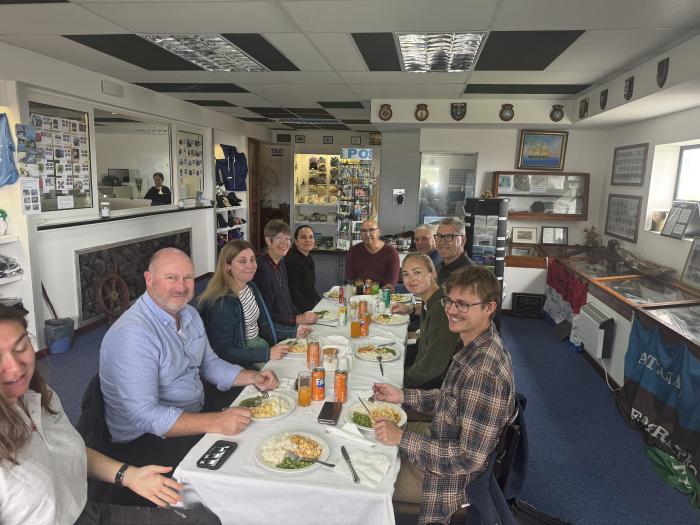
Visitors enjoying Wednesday lunch with Philip & Louise Kendall at the Tourism Centre. Photo: Kelly Green
One of the highlights was our craft day at the Centre, where visitors discussed making model longboats, and learned how Tristan wool is made, from carding and spinning to knitting. They had the chance to try their hand at each stage of the process while also chatting with islanders about local traditions. They also heard how wool has long been part of island life, from shearing the sheep that graze the Base to hand knitting garments that are now sold both locally and online. It's a lovely way of keeping our heritage alive and sharing a piece of Tristan with the wider world.
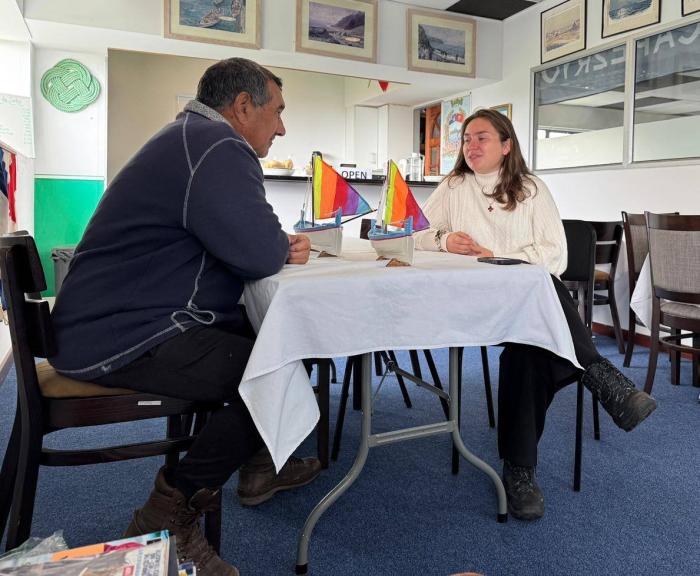
Odile Cesari talks with Brian Rogers about his model longboats. Photo: Kelly Green
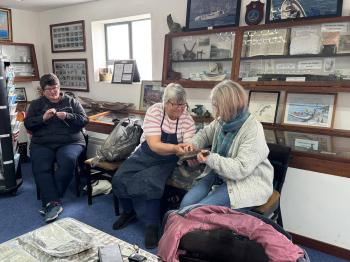 |
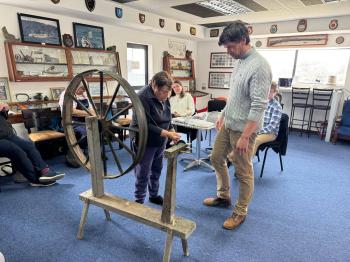 |
| Having a go at carding and spinning. Photos: Kelly Green | |
Another interesting event held during the visit was a display and introduction to the archive by Nick Schonfeld, who is here to continue work on the island's archive project, which is being supported by the Tristan da Cunha Association. Islanders were fascinated to see some of the old documents, records, and photographs he showcased, giving a glimpse into Tristan's rich history and how this ongoing project will help preserve it for future generations.
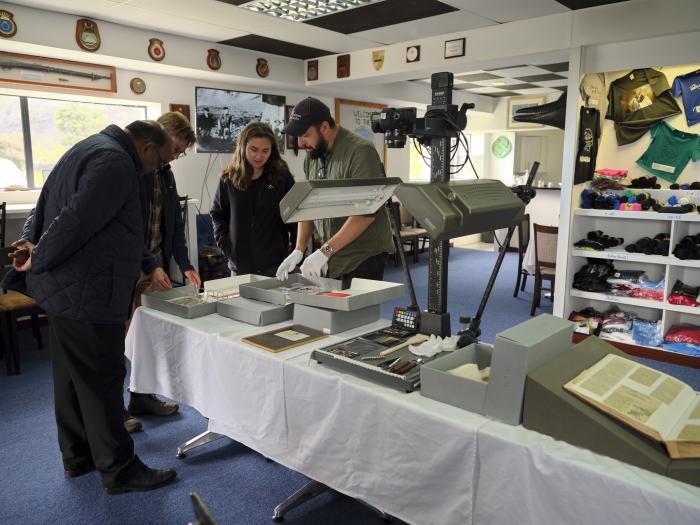
Nick Schönfeld displayed items from the Tristan archives and the equipment that is being used to digitise them.
Photo: Julia Gunther
Nightingale Island Trip
A standout moment was the conservation team's successful trip with visitors to Nightingale Island. Blessed with perfect weather, the group experienced this pristine environment up close.
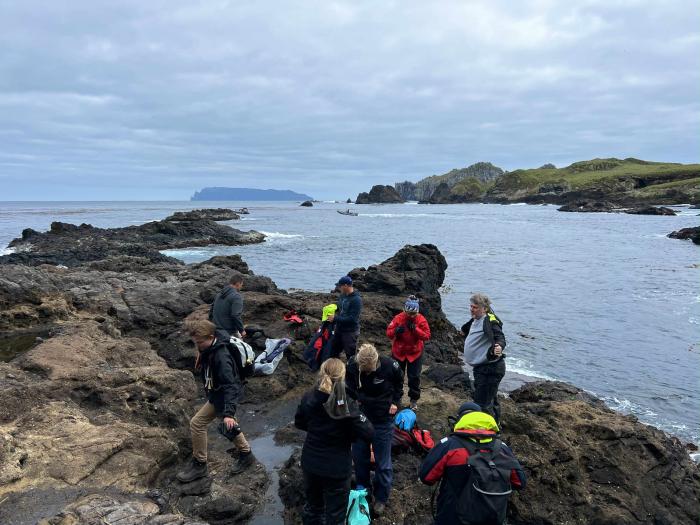
Landing at the West Landing with Inaccessible on the horizon. Photo: Shannon Swain
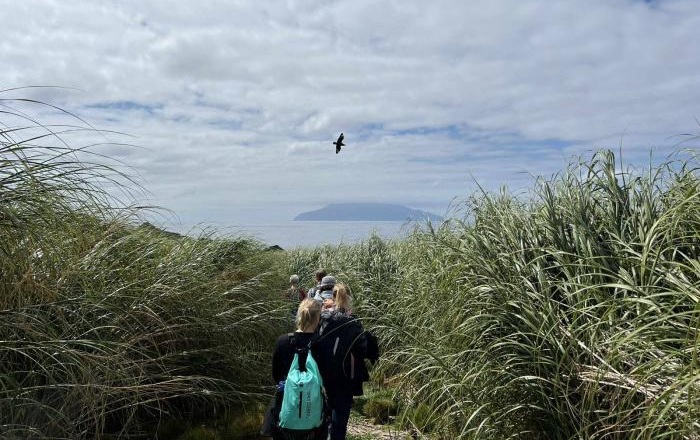
Visitors walking down one of the 'roads' between the tussock, with Tristan in the background. Photo: Shannon Swain
Nightingale is a jewel of the Tristan archipelago, home to some of the world's rarest and most spectacular wildlife. Visitors witnessed thousands of seabirds in their natural habitat, including yellow-nosed albatross, spectacled petrels, shearwaters, and the ever-entertaining rockhopper penguins. They also had the chance to see fur seals along the shoreline and appreciate the island's unique and fragile plant life, much of which is found nowhere else on Earth.
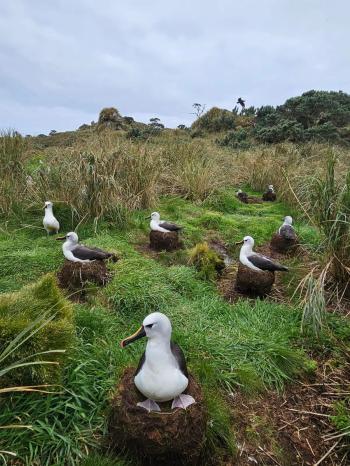 |
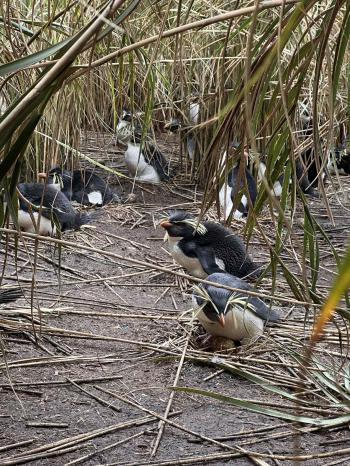 |
| Nesting Yellow-nosed Albatrosses | Incubating Rockhopper Penguins among the Tussock |
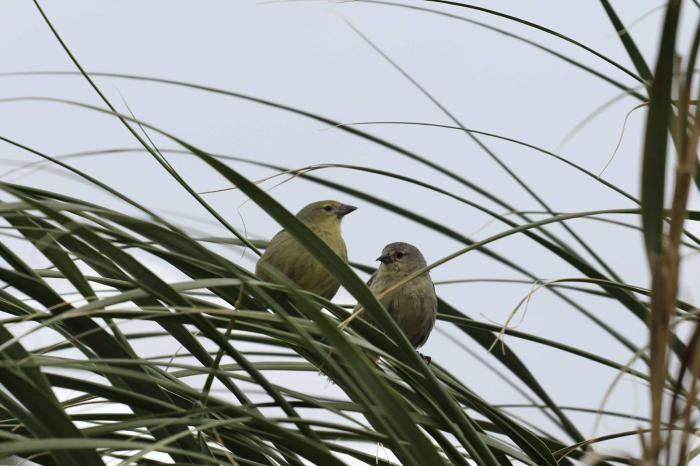
Nightingale Buntings. Photos: Odile Cesari
Some visitors hiked to the top of the island, rewarded with spectacular panoramic views of the South Atlantic, while others stayed closer to the shore to admire the bird colonies. On the return journey, there was even time to enjoy some fishing, making it an unforgettable day all round.
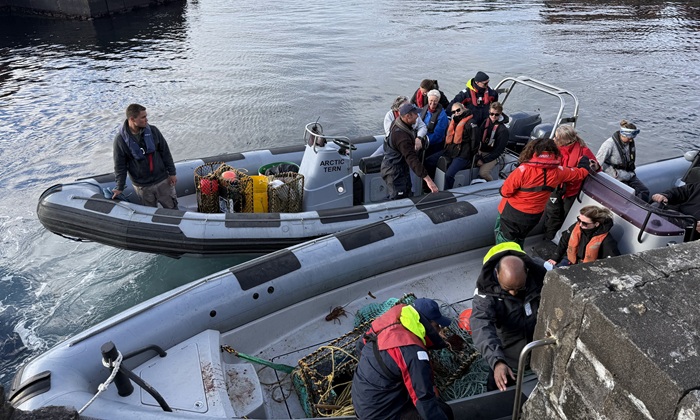
RIBS returned from Nightingale in the harbour with disembarking passengers. Photo: Philip Kendall
Hike up the Mountain
One of the highlights of the second week was a mountain walk, which was a full day trip. Guides Ryan Swain and Calvin Green took three of the visiting passengers up to the top of Burnt Wood, where they were rewarded with stunning views across to Nightingale and Inaccessible Islands. The weather was kind, and the group had a fantastic time exploring and learning more about Tristan's unique landscape.
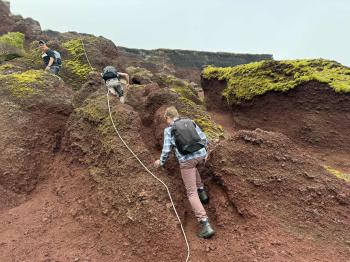 |
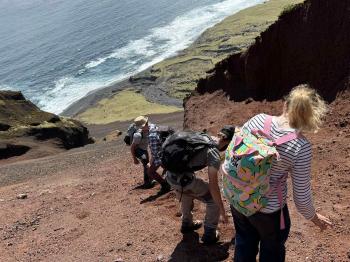 |
| Whether going up or coming down, the slope at Burnt Wood is always a challenge. | |
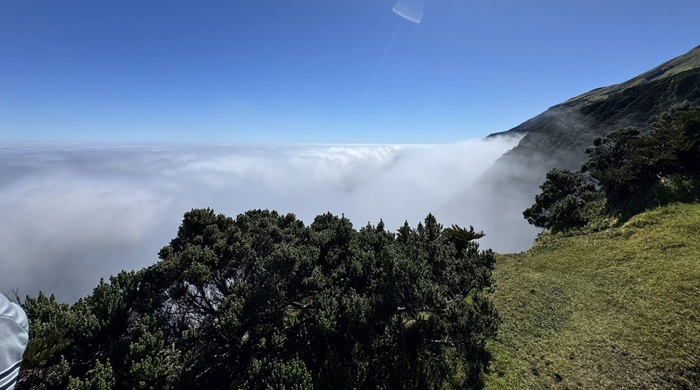
Once on the Base, the visitors were above the clouds...
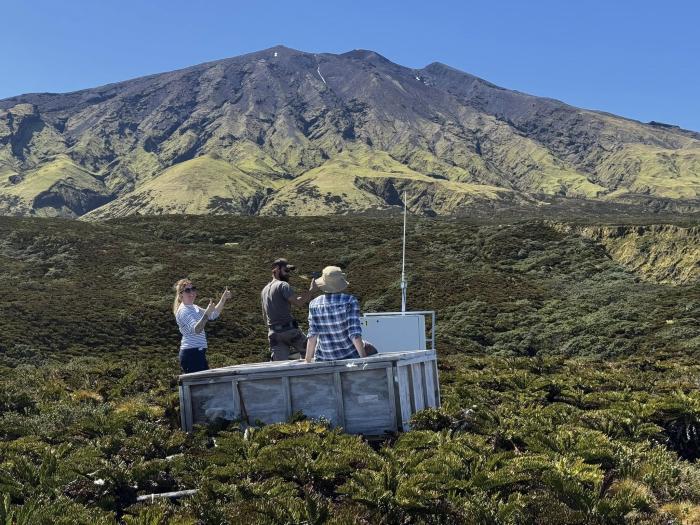
...and there was this wonderful view up to St Mary's Peak. Photos: Ryan Swain & Calvin Green
Departure & Thanks
The SA Agulhas II left unexpectedly a day early on the 9th October, which meant that there was a lot of running around at the last minute, but the timing worked well for an emergency medevac situation that had arisen.
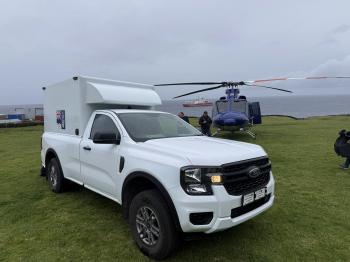 |
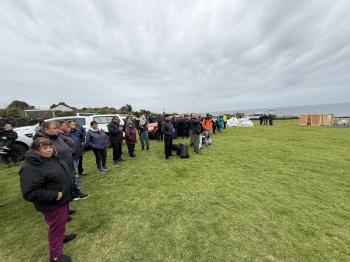 |
| The Camogli Health Centre's ambulance pulls up by the Agulhas II helicopter. | People watching helicopter departures. There is a pile of mailbags in the background. Photos: Philip Kendall |
Administrator Philip Kendall says that the Agulhas II visit was a great success! The group of visiting experts, family members and visitors all had a fruitful time on island. Philip and his wife Louise hosted a farewell reception at the Residency on the evening of Wednesday 8th, and he had a very useful catch-up about the Tristan da Cunha Association with trustee Hazel Carter. He posted the following Public Notice:
To the entire Tristan community,
I would like to extend my heartfelt thanks to everyone who contributed to the successful annual visit of the Agulhas II. From manning the radio to offloading cargo, hosting our guests to serving them in the bar, your dedication and teamwork were exceptional.
Whether you worked long days alongside our visitors or proudly showcased the touristic beauty of Tristan, your efforts did not go unnoticed. It was a shining example of what we can achieve together- a whole community effort that reflects the spirit and hospitality of our island.
Philip Kendall Administrator
We will be reporting separately on some of the activities of the visiting officials and specialists, but they didn't have to work all the time, so we finish with a picture of FCDO Infrastructure specialist Rob MacIver at Pigbite.
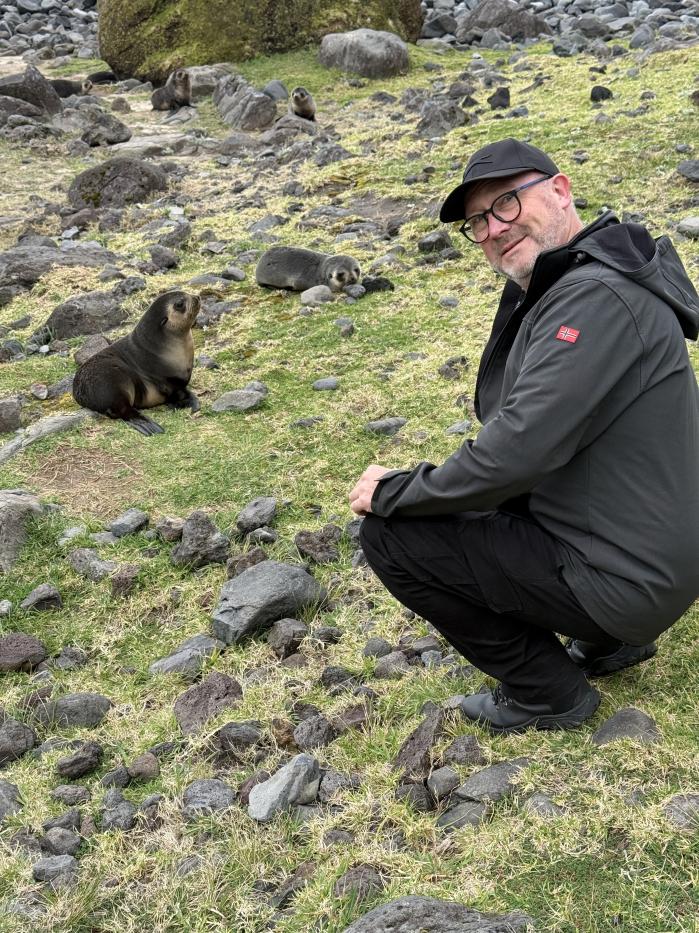
Visiting specialist Rob MacIver with fur seals at Pigbite. How many can you see? Photo: Philip Kendall
